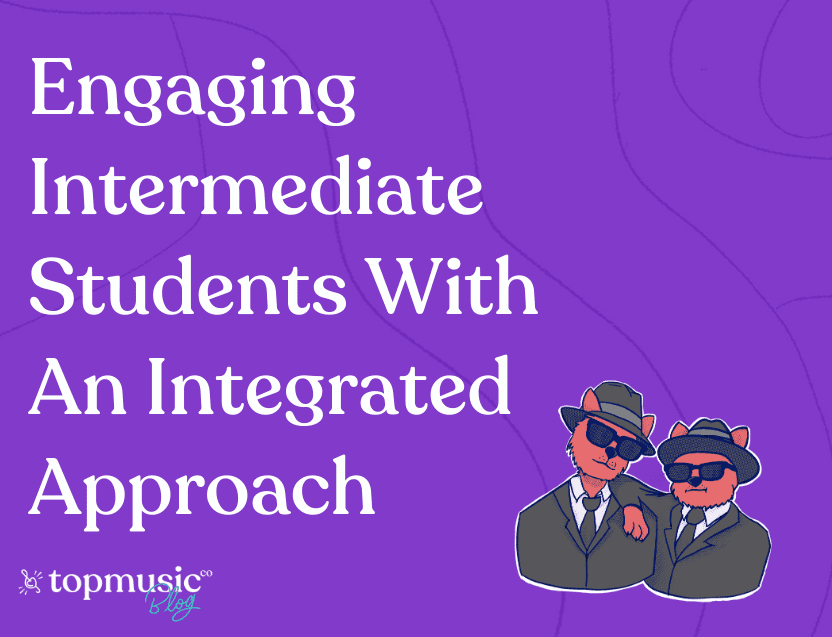Engaging intermediate students can be a challenge. They’ve finished their method books, and they’ve moved into the big wide world of intermediate repertoire.
They’re also highly likely to be of an age where the piano is battling for attention against school clubs and other extra-curricular activities. Keeping students engaged and interested is vital in retaining them and helping them reach the advanced level.
But how can you do that?
Janna Williamson, an expert teacher, has shared some great tips for us!
Table Of Contents:
Janna Williamson is TopMusic’s Intermediate Repertoire Specialist. You can find her in the TopMusicPro membership in her Piece By Piece series, where she breaks down how to teach intermediate repertoire to your students. This includes how to teach your students to teach beautifully, with expression, and how to navigate technical demands.
When it comes to teaching intermediate-level students, Janna knows her stuff!
Theory knowledge should be infused into every part of intermediate students’ curriculum.
Theory is the glue that binds everything together.
The following integrated teaching tips are shared with the assumption that theory will be discussed and understood in every activity.
Many teachers with a theory background comment how they were never taught how to combine theory with practice. They were taught theory away from the piano. It wasn’t related to their repertoire so it became boring.
When theory isn’t used to help with music and is instead presented as a separate entity, students can lose interest.
Integrated teaching allows students to combine theory with their repertoire and make connections. This engages students as their theory knowledge and practical skills slot together like a puzzle. They begin to see the bigger musical picture.
Related: The Art of Keeping Music Theory Fun and Engaging
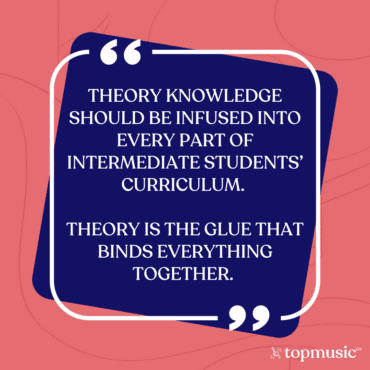
The four basic areas of intermediate level curriculum are:
Intermediate students learn best when they:
Intermediate-level students are usually at the age when they start questioning everything in life (that fun time of teenage discovery!) They want to know what’s in it for them. If they don’t see or understand the reasons and benefits, their engagement level starts sinking.
Bring back their engagement by explaining the “why” and helping them make connections.
If you ask a student to learn and practice their scales you may be met with a blank stare as they think, “That sounds like hard work. Why should I do that?”
But explaining and demonstrating why learning and practicing their scales will actually help them? Well, that’s a whole different thing.
If they can see that by doing (x) they’ll actually be quicker at (y), chances are, they’ll do it.
Understanding connections = improved engagement.
Related: Teaching Expression in Intermediate Historical Repertoire
If you know which repertoire piece your student will be moving on to next, there are a few activities you can do to prepare. Say that the key of the piece is D major. You could:
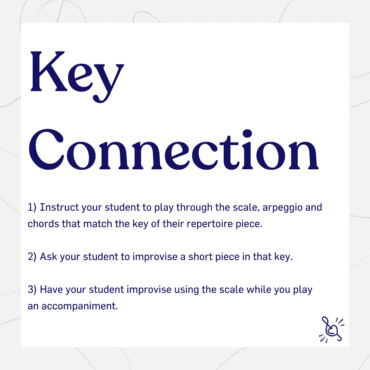
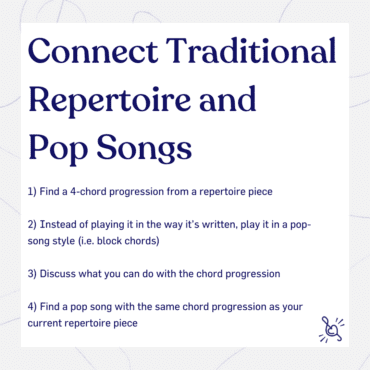
This is particularly useful if a student is new to Alberti bass. It can be awkward when a student is first learning it, but if they’re practicing it more than once in different ways (in the repertoire piece and also in their own composition) then they become more comfortable with the pattern.
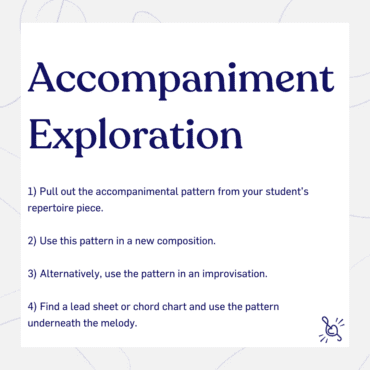
Some teachers are more comfortable with making certain connections. Perhaps you’re a teacher who can see how to combine functional skills with repertoire, but you draw a blank when it comes to creative activities.
Here’s a real-life specific example to show you in practice, using Chopin’s Waltz in A minor.
This piece is based on the same chord progression over and over again: A minor, D minor, G7, C.
Forming connections between repertoire and other skills not only helps the student with their pieces, but it also allows them to explore the world of music in creative ways. This helps retain their engagement and also helps you set goals for your intermediate students.
For example, by working on their compositional skills alongside their repertoire, a student may discover that they have a passion for music-making and would like to explore that avenue.
Or maybe playing from lead sheets and boosting a student’s chord knowledge has opened up the opportunity to play with other musicians in a band.
Setting goals and meaningful milestones for your intermediate students can be key in keeping them going through the “Intermediate Wildness” and we have something to help you with that!
